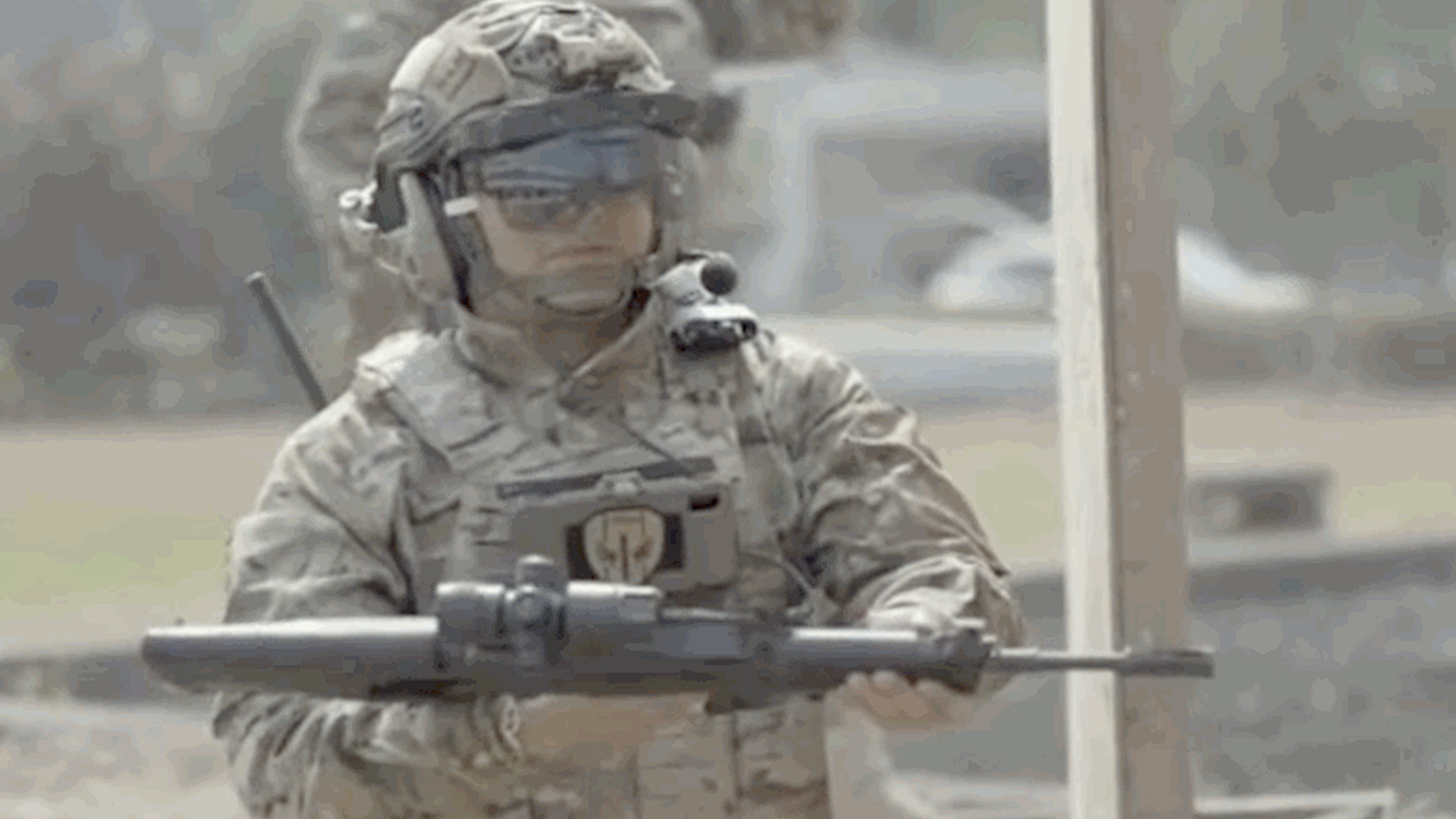

The Chinese military is stepping up its augmented reality game with a new pair of digital goggles that will purportedly allow soldiers to aim and fire their weapons from behind cover.
The Eurasian Times reports that China’s People’s Liberation Army (PLA) soldiers were spotted testing the heads-up displays — which appear to be variants of the Military Augmented Reality System (MARS) headset —and associated weapons optics in a recent promotional video from a PLA-affiliated defense technology publication that was published this year.

The footage shows Chinese soldiers with sleek visors wielding QBZ-95 service rifles with digital weapons scopes. In one scene, a soldier fires from around a wall while another fires with his rifle over his head from behind cover, with both ostensibly using information projected on their heads-up displays to identify and engage targets (the video does not offer any indication if their fire was, in fact, effective and on target).
The MARS system appears to closely resemble the U.S. Army’s Integrated Visual Augmentation System (IVAS), the do-it-all goggles that have been undergoing intensive testing for the last several years.

The appearance of an augmented reality headset in the hands of the PLA isn’t surprising: the Chinese military has been incorporating augmented and virtual reality systems into their training regimens for several years now, employing synthetic training environments for everything from parachute training to missile exercises.
But the Chinese military is clearly a few years behind existing U.S. military technology in terms of its tactical applications. Indeed, American soldiers have been shooting around corners for years thanks to recent developments with the U.S. Army’s standard-issue night vision goggles and a fresh weapons optic.
The service’s new Enhanced Night Vision Googles-Binoculars (ENVG-B) and Family of Weapons Sights-Individual (FWS-I) — developed by the Army to fuse standard night vision with thermal scanning during nighttime operations — offers similar functionality to soldiers, feeding the image from an FWS-I optic mounted on an M4 carbine or M249 Squad Automatic Weapon into an ENVG-B system for picture-in-picture targeting.

“The ENVG-B wirelessly operates with the FWS-I to provide Rapid Target Acquisition (RTA) capability,” according to the Army’s fiscal year 2023 budget request. “RTA is the capability to view the boresighted/zeroed weapon sight reticle in the ENVG-B display, enabling the soldier to accurately engage targets without having to bring the weapon to eye level and without the use of active lasers, all while remaining in defilade.”
It’s unclear how much the MARS replicates the picture-in-picture view of the ENVG-B/FWS-I combo that the Army is currently fielding. Video circulated on Twitter in late December appeared to show the view through a MARS heads-up display system during testing.
The use of the MARs headset in PLA training materials may not bode well for the near-peer competition between the U.S. and China as the two countries seek to modernize their militaries ahead of the next big war. But still, if the MARS is anything like the IVAS, then there’s an outside chance that Chinese troops may hate it enough to reject it entirely.
The latest on Task & Purpose
- The Navy wiped the ‘Top Gun: Maverick’ director’s camera after he ‘captured something I wasn’t supposed to capture’
- Marine under investigation after viral video showed altercation with hotel staff
- Fighter pilot to receive Navy Cross more than 70 years after classified dogfight with 7 Soviet jets
- 2 Navy commanders fired in one day
- The Marines have a new ship-killing weapons system to counter China
Want to write for Task & Purpose? Click here.